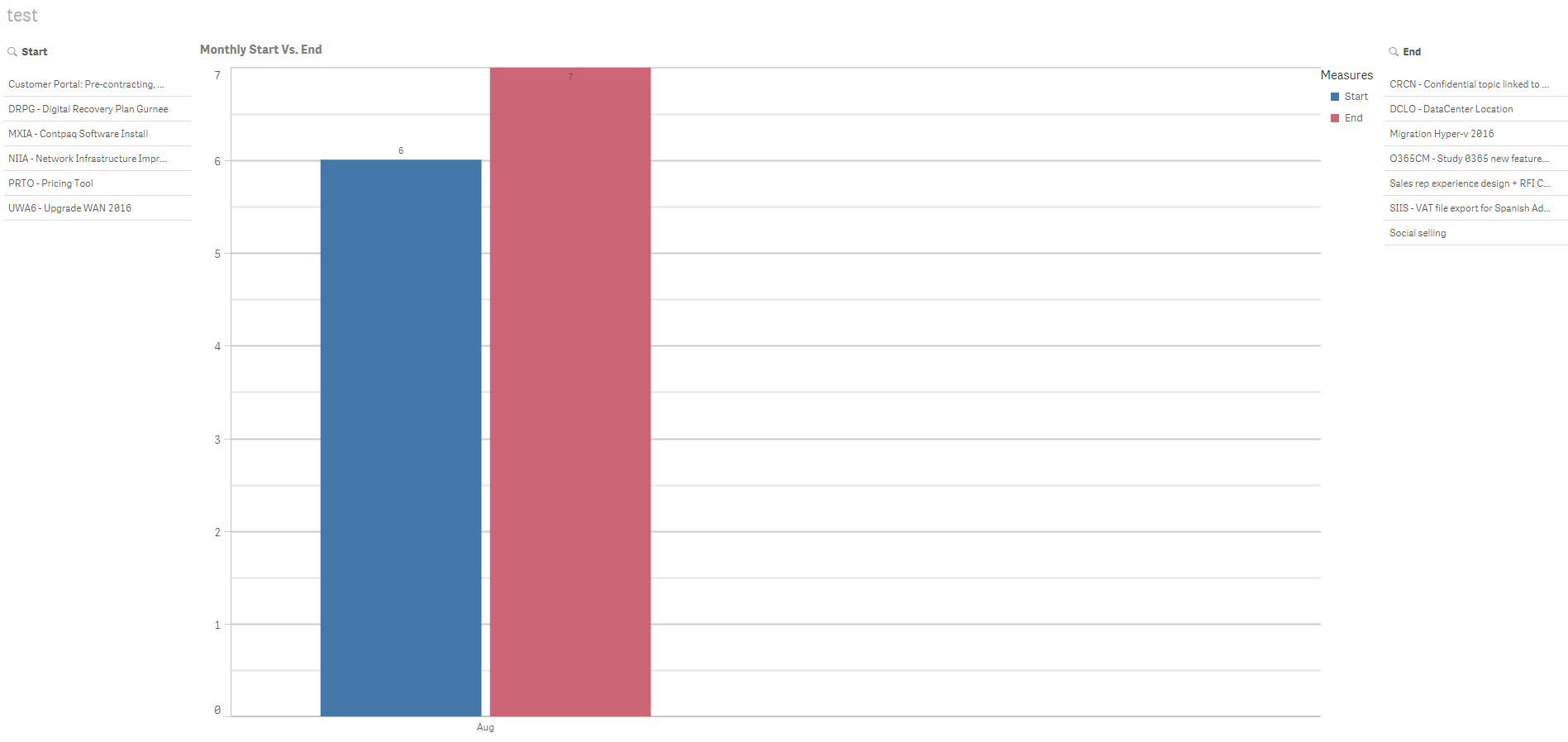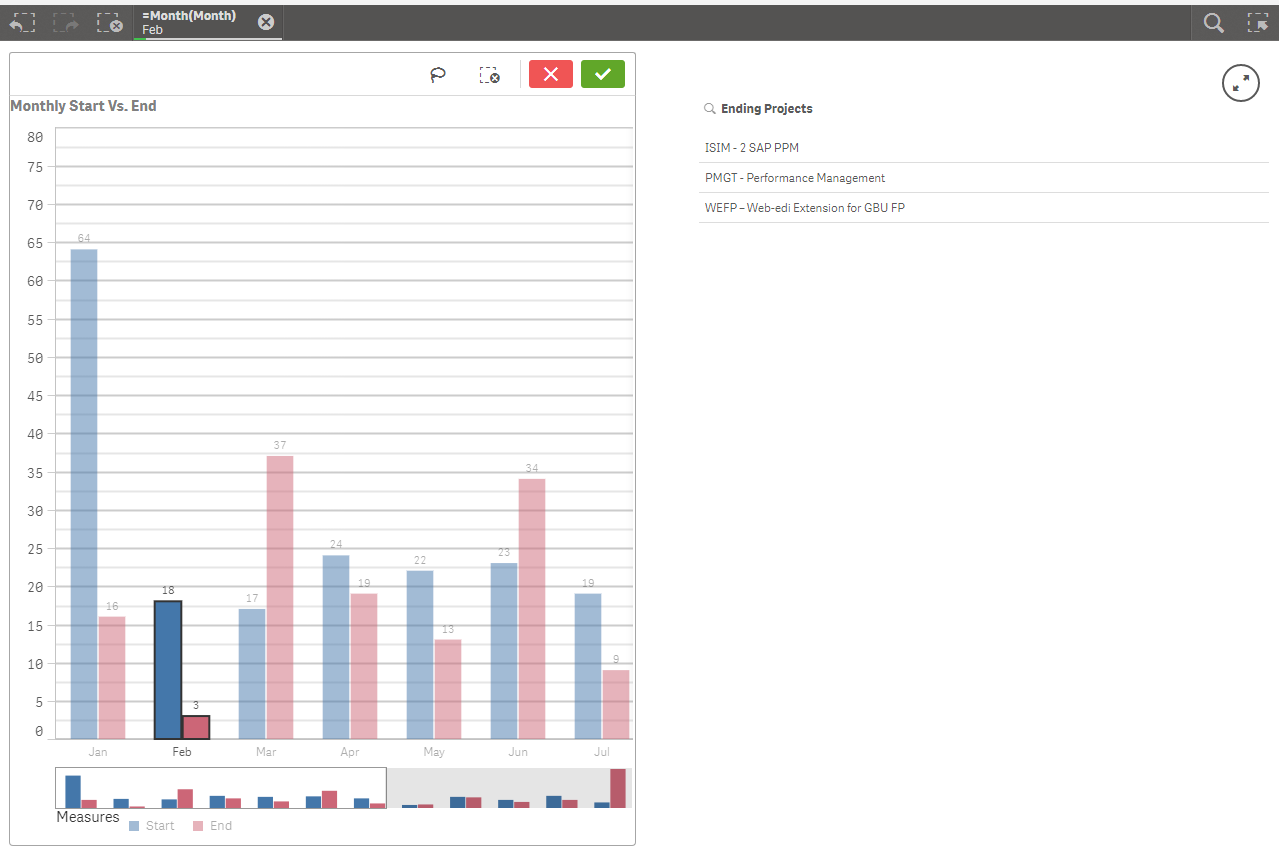Unlock a world of possibilities! Login now and discover the exclusive benefits awaiting you.
- Qlik Community
- :
- All Forums
- :
- QlikView App Dev
- :
- ?
- Subscribe to RSS Feed
- Mark Topic as New
- Mark Topic as Read
- Float this Topic for Current User
- Bookmark
- Subscribe
- Mute
- Printer Friendly Page
- Mark as New
- Bookmark
- Subscribe
- Mute
- Subscribe to RSS Feed
- Permalink
- Report Inappropriate Content
?
.
Accepted Solutions
- Mark as New
- Bookmark
- Subscribe
- Mute
- Subscribe to RSS Feed
- Permalink
- Report Inappropriate Content
Hmmm, it'll be interesting to see other comments from the community.
I've done it but instead of a filter pane I've used a straight table, with the project name as the dimension and a measure such as this one: Count({<Flag = {'Ending'}>} [NAME OF PROJECT (Code - Title)])
I hope this helps,
Cheers,
Luis
- Mark as New
- Bookmark
- Subscribe
- Mute
- Subscribe to RSS Feed
- Permalink
- Report Inappropriate Content
Hmmm, it'll be interesting to see other comments from the community.
I've done it but instead of a filter pane I've used a straight table, with the project name as the dimension and a measure such as this one: Count({<Flag = {'Ending'}>} [NAME OF PROJECT (Code - Title)])
I hope this helps,
Cheers,
Luis
- Mark as New
- Bookmark
- Subscribe
- Mute
- Subscribe to RSS Feed
- Permalink
- Report Inappropriate Content
these two expressions will work if you just want get the list
=ValueList($(=Concat({<Flag = {Starting}>}Chr(39) & [NAME OF PROJECT (Code - Title)]& Chr(39),',')))
=ValueList($(=Concat({<Flag = {Starting}>}Chr(39) & [NAME OF PROJECT (Code - Title)]& Chr(39),',')))

however , you can't use it as filter any more![]()
- Mark as New
- Bookmark
- Subscribe
- Mute
- Subscribe to RSS Feed
- Permalink
- Report Inappropriate Content
In your case you can use
=if(Date=Start,[NAME OF PROJECT (Code - Title)])
for your Start filter and:
=if(Date=End,[NAME OF PROJECT (Code - Title)])
for your end Filter
- Mark as New
- Bookmark
- Subscribe
- Mute
- Subscribe to RSS Feed
- Permalink
- Report Inappropriate Content

- Mark as New
- Bookmark
- Subscribe
- Mute
- Subscribe to RSS Feed
- Permalink
- Report Inappropriate Content
Oh I think I got it,
Please try with this on the filter pane:
=AGGR(Only({<Flag = {'Ending'}>} [NAME OF PROJECT (Code - Title)]),[NAME OF PROJECT (Code - Title)])

It makes all the difference that you've sent a qvf,
Cheers,
Luis
- Mark as New
- Bookmark
- Subscribe
- Mute
- Subscribe to RSS Feed
- Permalink
- Report Inappropriate Content
I forgot:
PS. When applicable please mark the appropriate replies as Correct. This will help community members know which discussions have already been addressed and have a possible known solution. Please mark replies as Helpful if the provided solution is helpful to the problem, but does not necessarily solve the indicated problem. You can mark multiple threads as Helpful if you feel additional info is useful to others